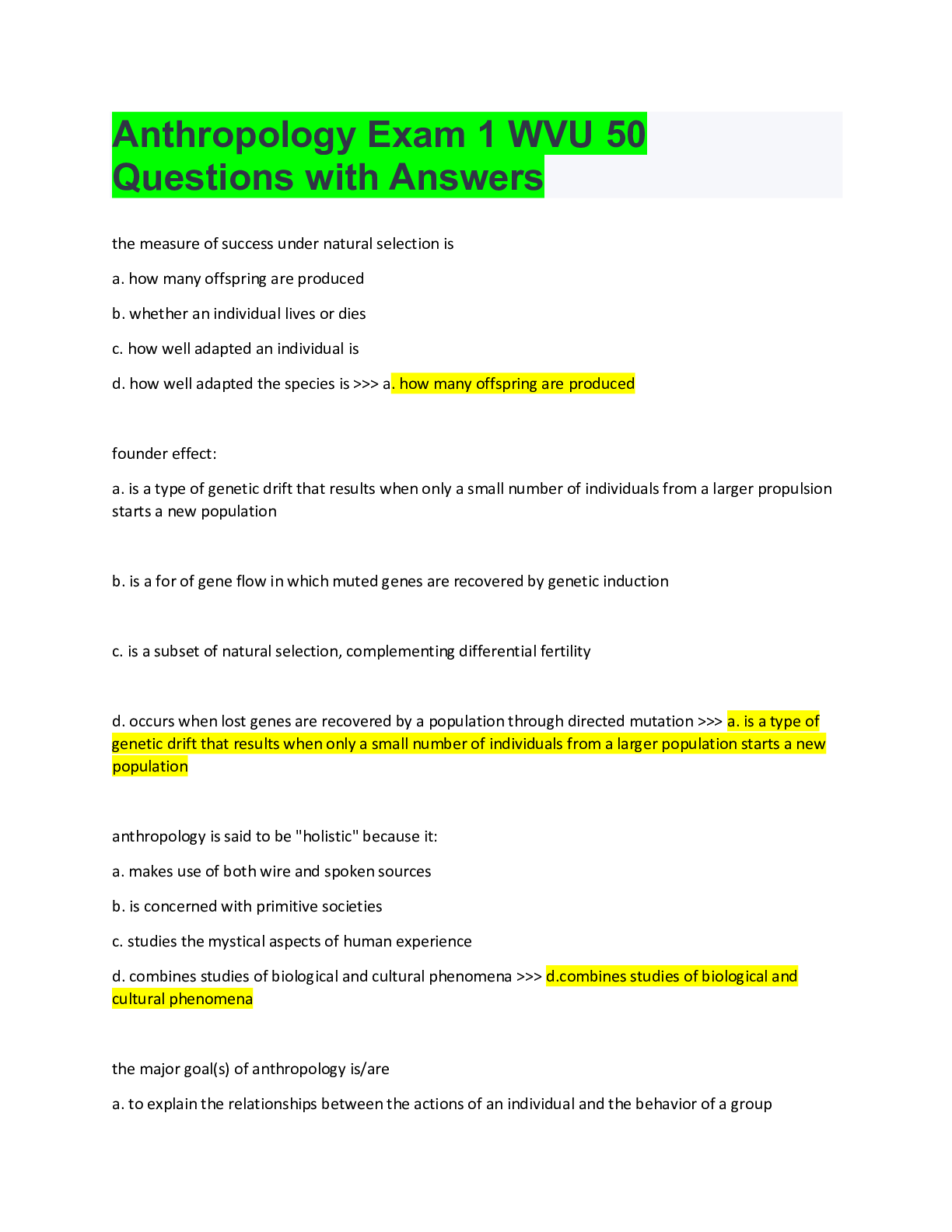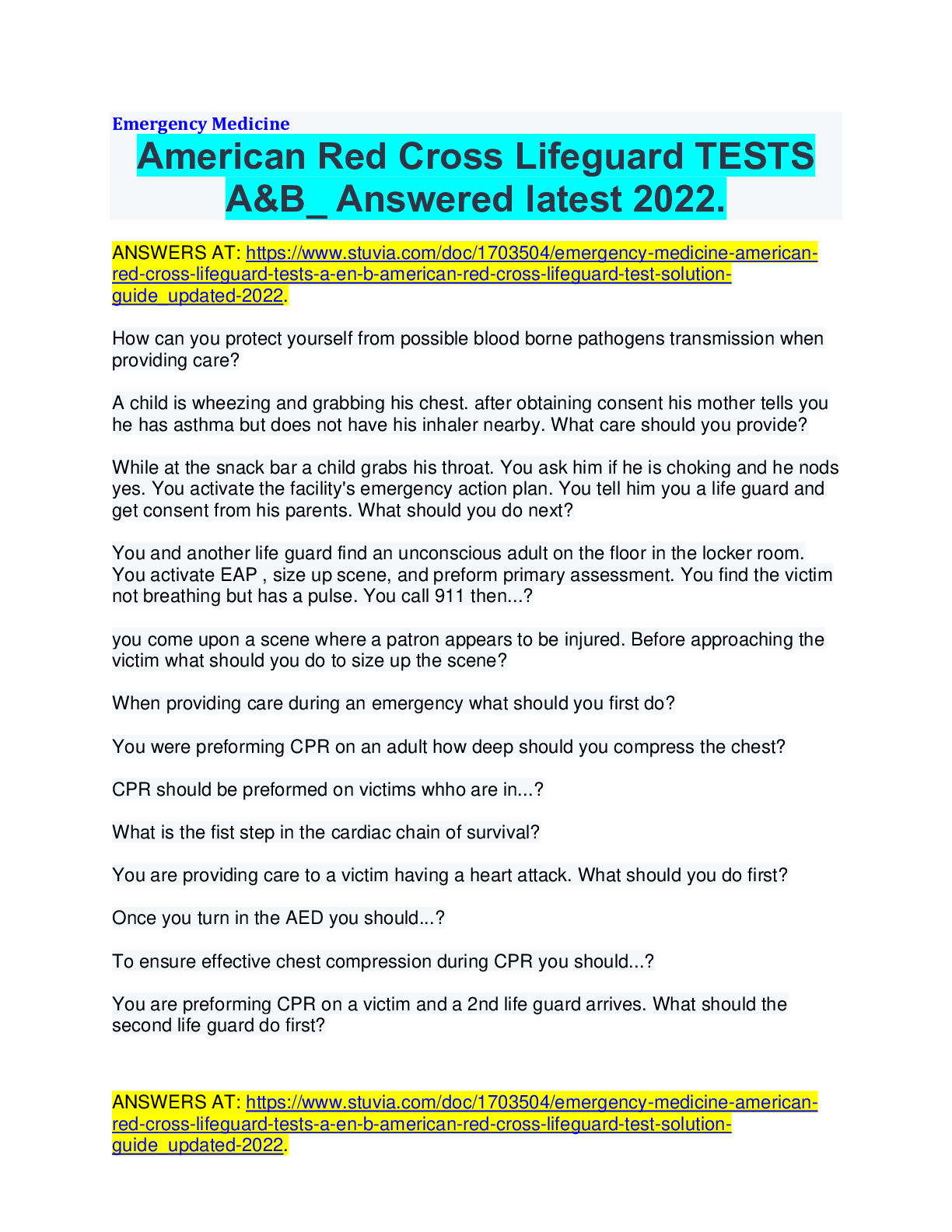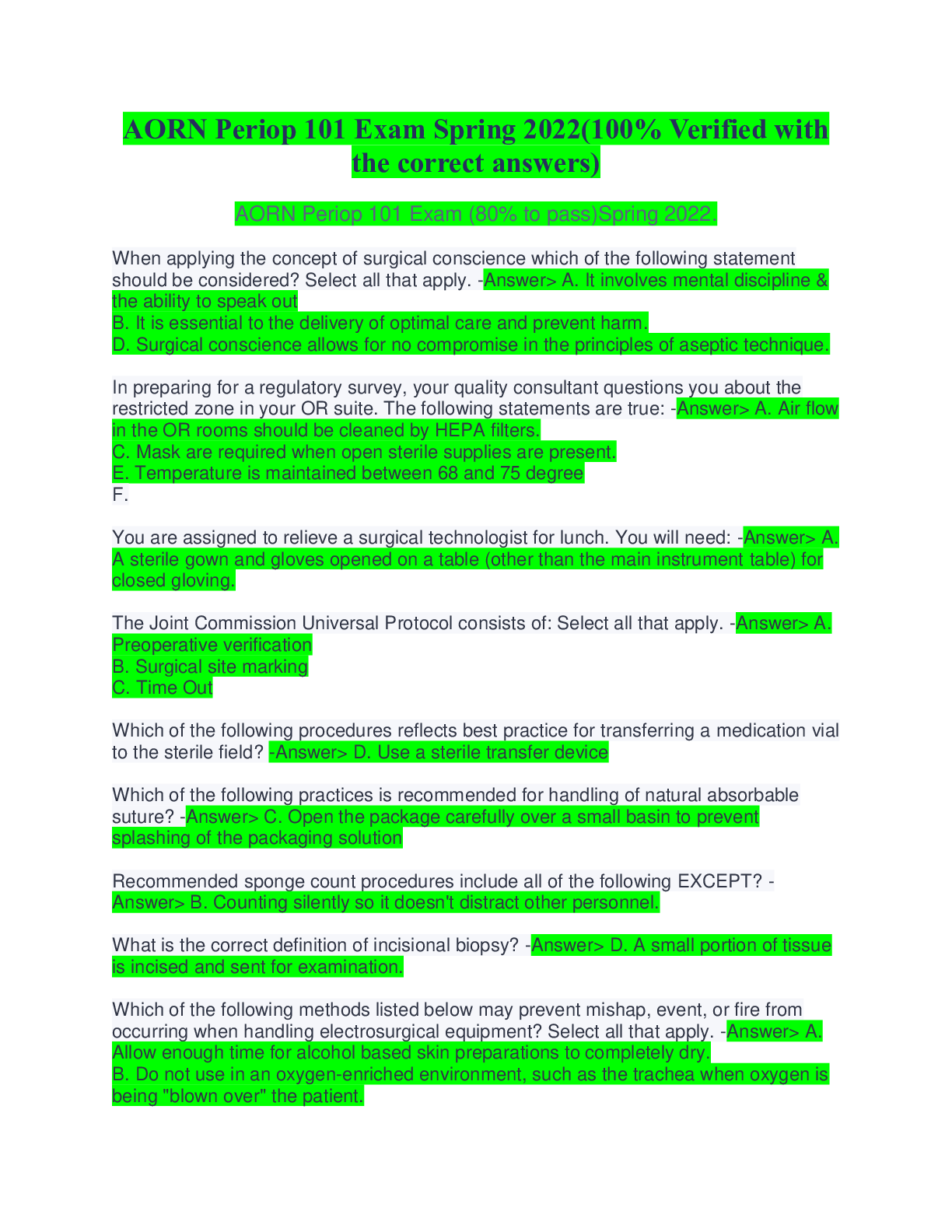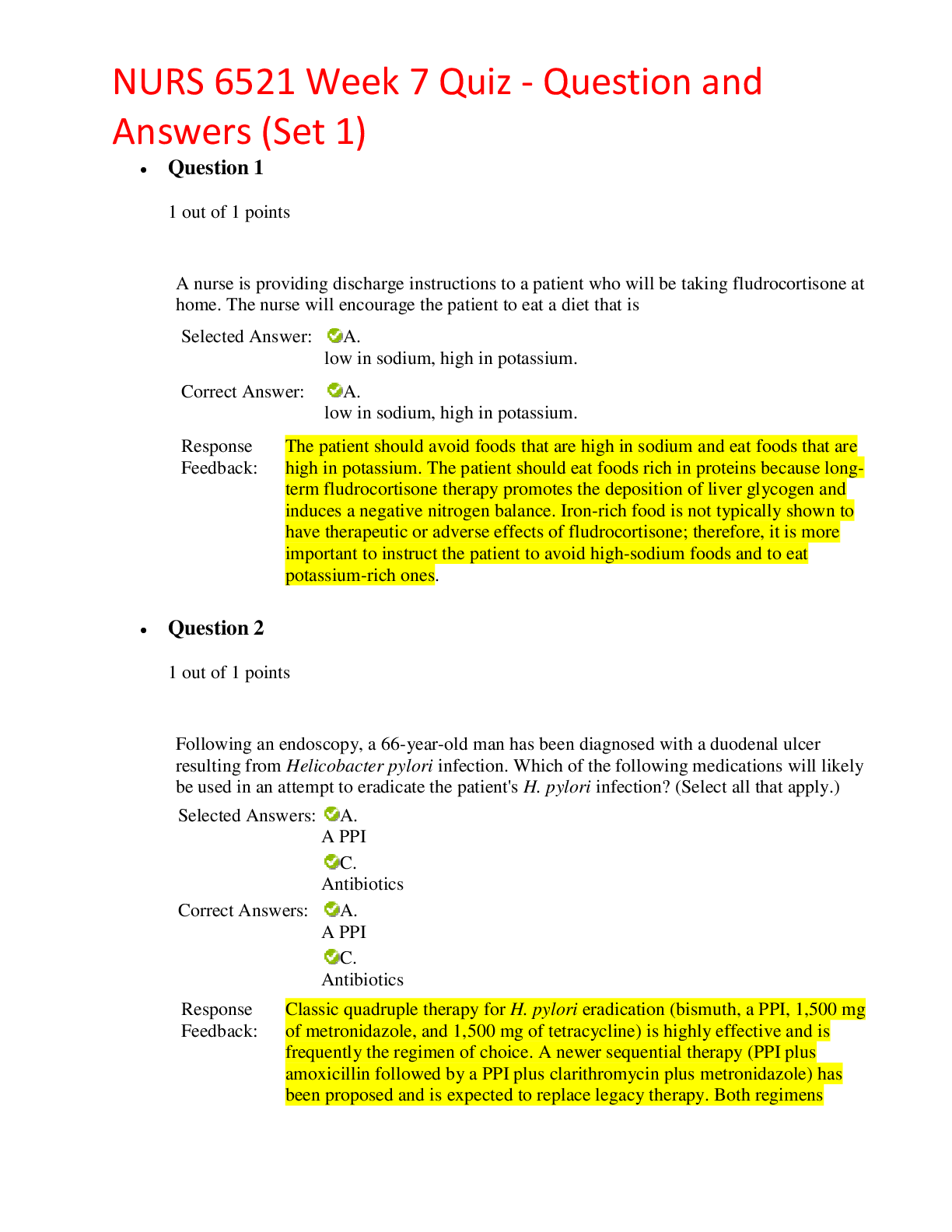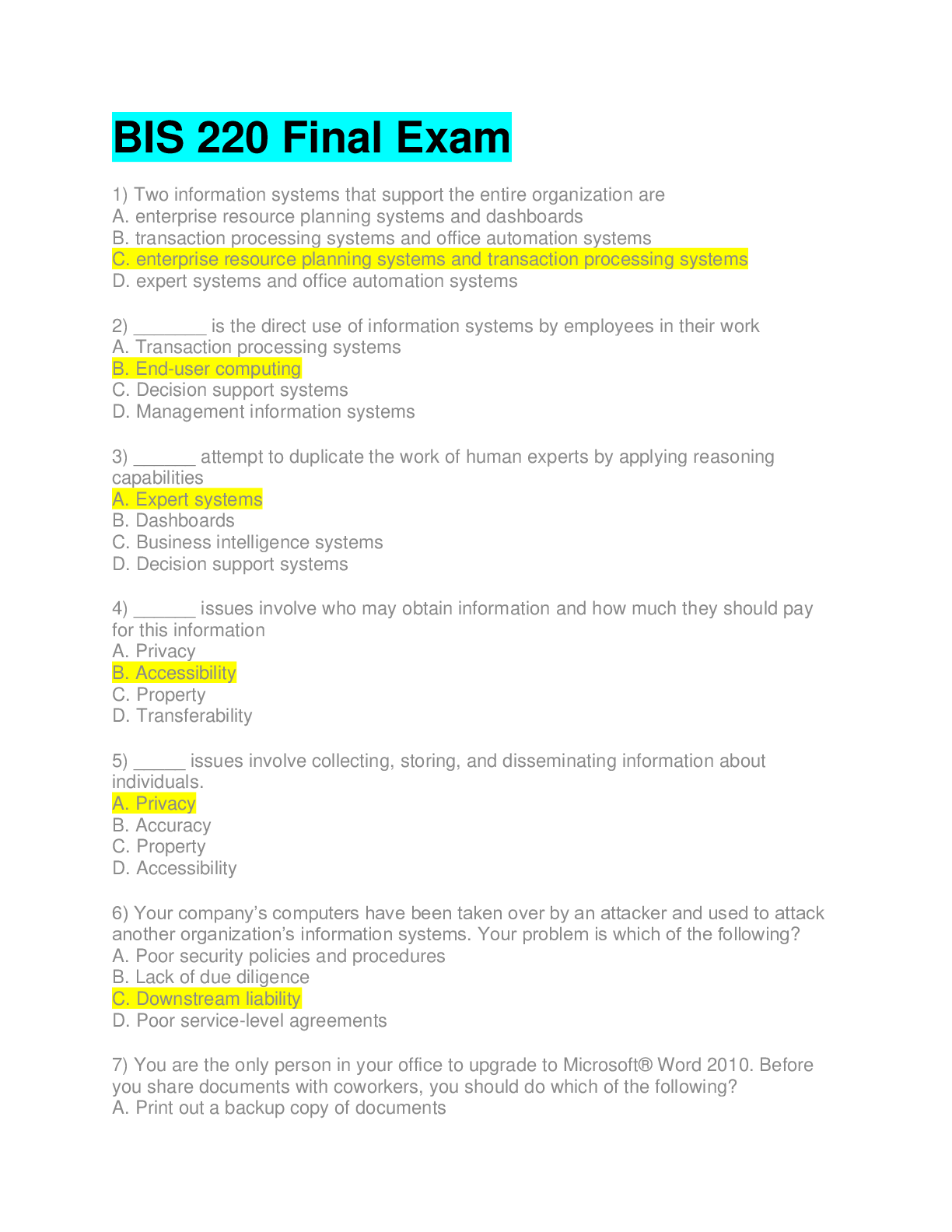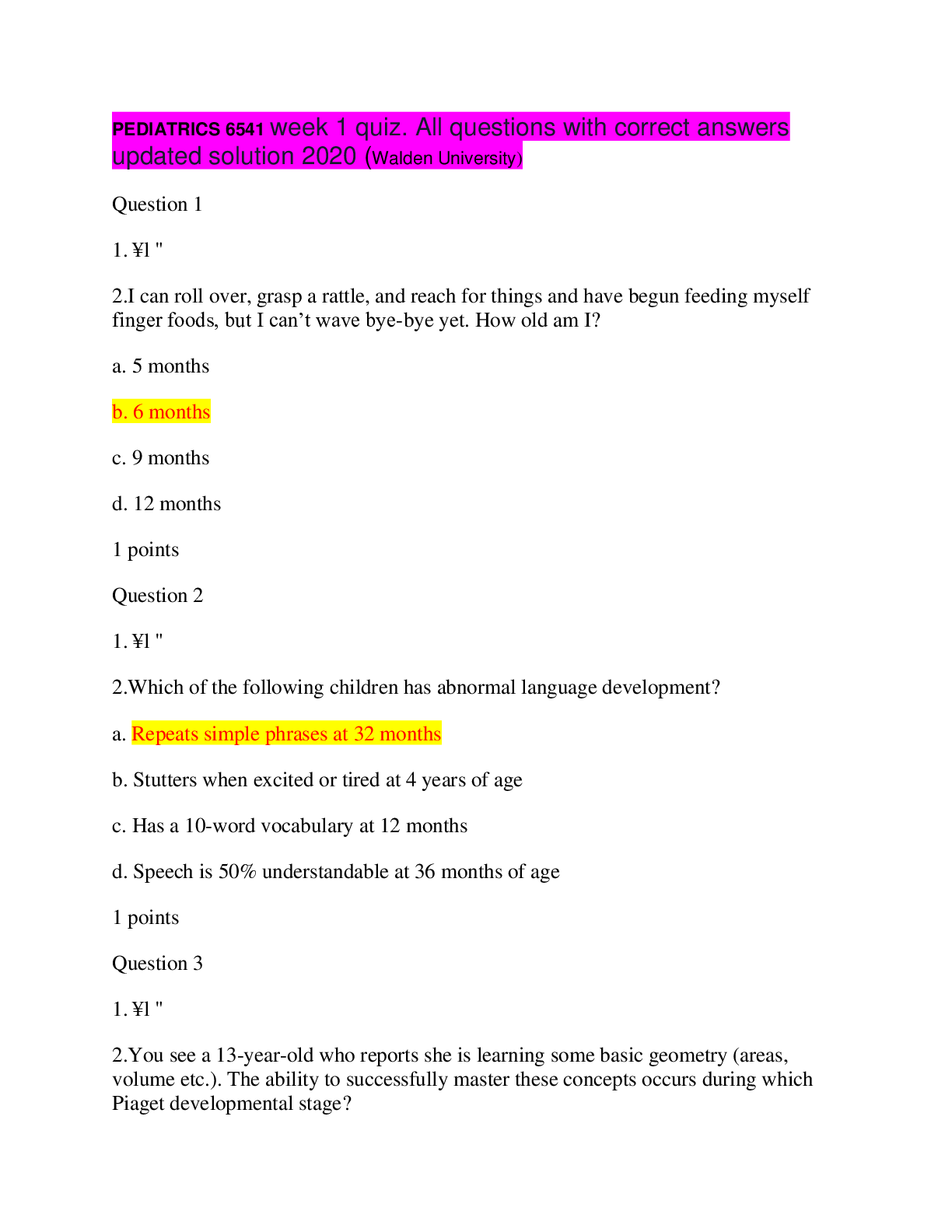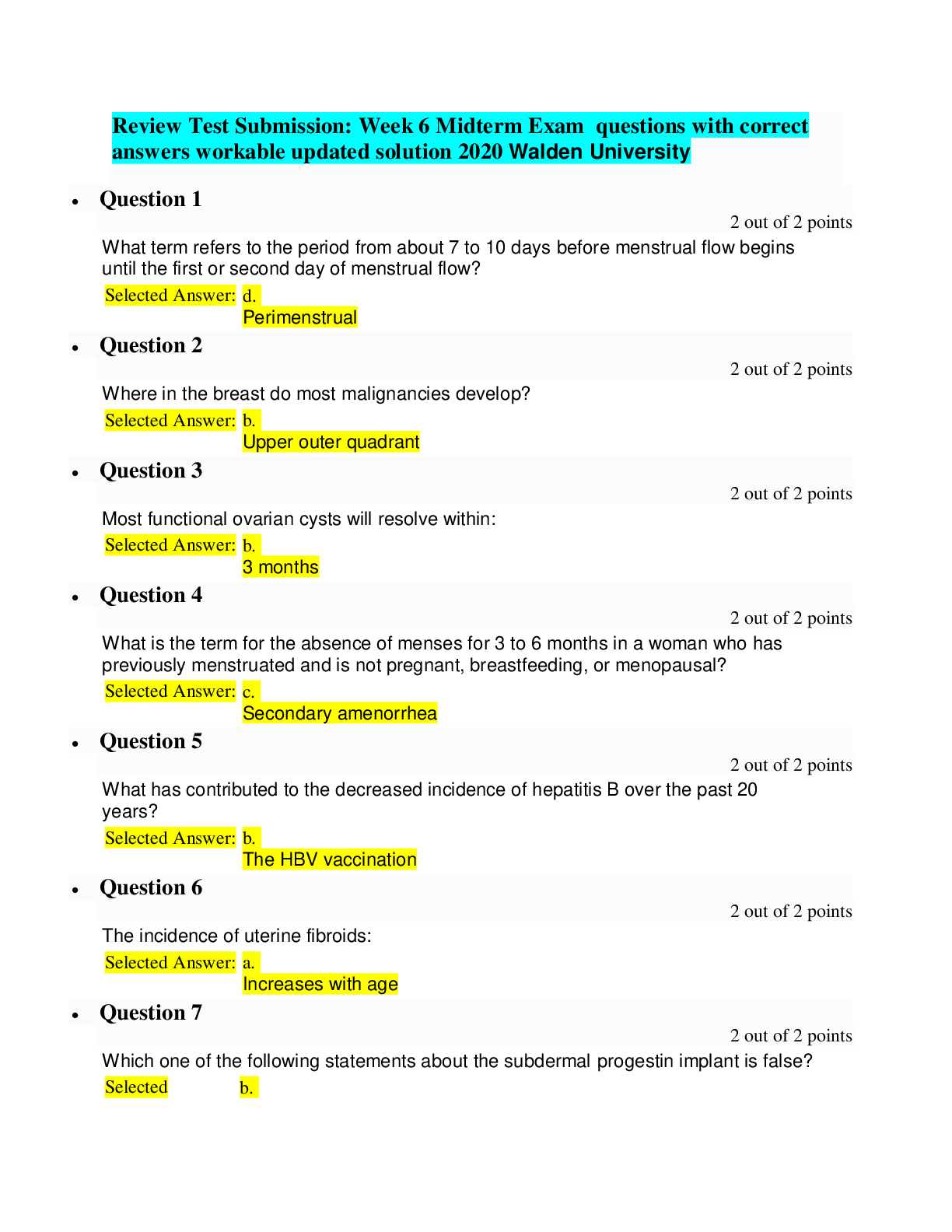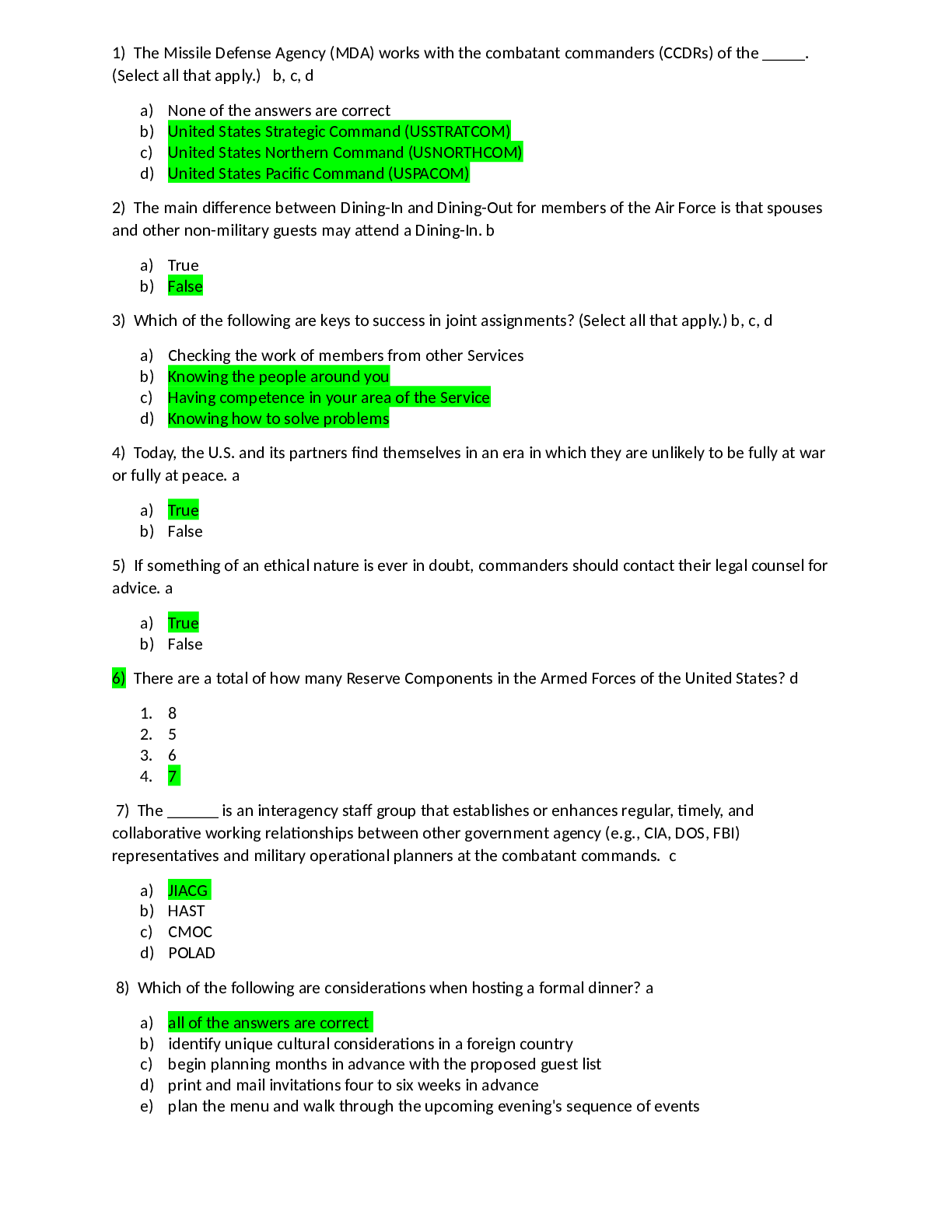Medical Studies > QUESTIONS & ANSWERS > Health Assessment Final Exam Questions with correct answers & Rationale. Rated A. (All)
Health Assessment Final Exam Questions with correct answers & Rationale. Rated A.
Document Content and Description Below
1. A physician tells the nurse that a patients vertebra prominens is tender and asks the nurse to reevaluate the area in 1 hour. The area of the body the nurse will assess is: a. Just above the diaph... ragm. b. Just lateral to the knee cap. c. At the level of the C7 vertebra. d. At the level of the T11 vertebra. - Ans-ANS: C The C7 vertebra has a long spinous process, called the vertebra prominens, which is palpable when the head is flexed. 2. A mother brings her 2-month-old daughter in for an examination and says, My daughter rolled over against the wall, and now I have noticed that she has this spot that is soft on the top of her head. Is something terribly wrong? The nurses best response would be: a. Perhaps that could be a result of your dietary intake during pregnancy. b. Your baby may have craniosynostosis, a disease of the sutures of the brain. c. That soft spot may be an indication of cretinism or congenital hypothyroidism. d. That soft spot is normal, and actually allows for growth of the brain during the first year of your babys life. - Ans-ANS: D Membrane-covered soft spots allow for growth of the brain during the first year of life. They gradually ossify; the triangular-shaped posterior fontanel is closed by 1 to 2 months, and the diamond-shaped anterior fontanel closes between 9 months and 2 years. 3. The nurse notices that a patients palpebral fissures are not symmetric. On examination, the nurse may find that damage has occurred to which cranial nerve (CN)? a. III b. V c. VII d. VIII - Ans-ANS: C Facial muscles are mediated by CN VII; asymmetry of palpebral fissures may be attributable to damage to CN VII (Bell palsy). 4. A patient is unable to differentiate between sharp and dull stimulation to both sides of her face. The nurse suspects: a. Bell palsy. b. Damage to the trigeminal nerve. c. Frostbite with resultant paresthesia to the cheeks. d. Scleroderma. - Ans-ANS: B Facial sensations of pain or touch are mediated by CN V, which is the trigeminal nerve. Bell palsy is associated with CN VII damage. Frostbite and scleroderma are not associated with this problem. 5. When examining the face of a patient, the nurse is aware that the two pairs of salivary glands that are accessible to examination are the ___________ and ___________ glands. a. Occipital; submental b. Parotid; jugulodigastric c. Parotid; submandibular d. Submandibular; occipital - Ans-ANS: Cvv [Show More]
Last updated: 2 years ago
Preview 1 out of 22 pages

Buy this document to get the full access instantly
Instant Download Access after purchase
Buy NowInstant download
We Accept:

Reviews( 0 )
$12.00
Can't find what you want? Try our AI powered Search
Document information
Connected school, study & course
About the document
Uploaded On
Sep 08, 2022
Number of pages
22
Written in
Additional information
This document has been written for:
Uploaded
Sep 08, 2022
Downloads
0
Views
101



